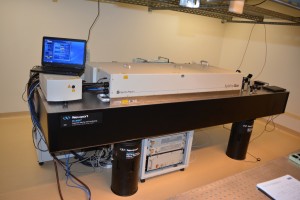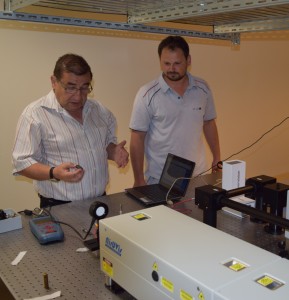The new femtosecond laser system, delivered at the Institute of Solid State Physics, consists of several units – amplifier, oscillator, pumping laser and TOPAS unit. The Ti:Sapphire regenerative amplifier is a Spitfire Ace model with pulse width ~ 35 fs and pulse energy ~ 6 mJ. The Spitfire Ace performs optimally when seeded with the revolutionary Mai Tai® SP oscillator. The Mai Tai SP laser is a true hands-free system that does not require whatever alignment, cleaning or adjustments.
The Spitfire Ace is pumped with Empower® 45 laser, which delivers over 45 W of average power in a compact package. Equipped with proprietary noise reduction technology, the Empower 45 is the quietest amplifier pump laser on the market.
With the combination of Spectra-Physics’ XP cavity, Mai Tai SP seeder and Empower 45 pump, the Spitfire Ace provides the most stable output available from a Ti:Sapphire regenerative amplifier. The enhanced stability makes the Spitfire Ace ideal for pumping multiple optical parametric amplifier (OPA) systems. The TOPAS Prime automated OPA is a state-of-the-art instrument for wavelength extension of the Spitfire® Ace™ Ti:Sapphire amplifier system. Wavelengths can be generated from the deep UV range through the infrared (189–2000 nm).
Nanostructures and nanosystems take advantage not only of the small dimensions of the objects but of the specific way of interaction between nano objects. The understanding of internal dynamics on the femtosecond time scale is utterly important and requires advanced measurement techniques. Here, comes the role of ultrashort laser pulses, with durations approaching the timescales of fundamental atomic and molecular processes.
The development of lasers with pulse lengths of the order of femtosecond laser sources allows better observation of ultrafast processes and time-resolved measurements. They deliver energy so quickly that new processes and investigations are achievable. The short pulse duration allows probing delicate living structures without bringing any damage to them. The material’s bulk and surface modifications on the nanoscale can be performed with precisely controllable heat effects.







 Saving...
Saving...